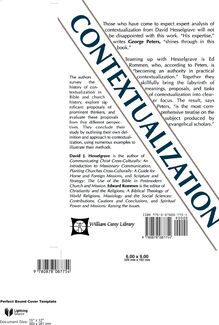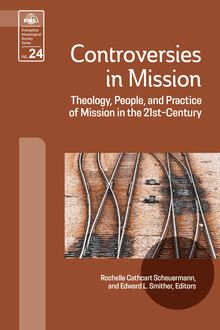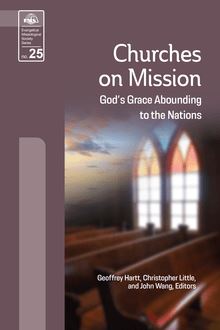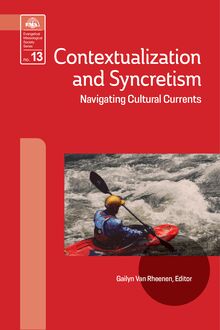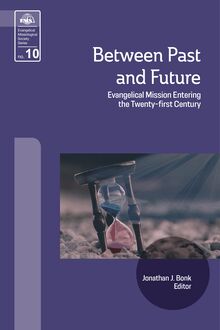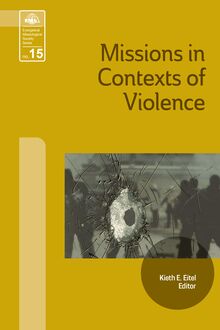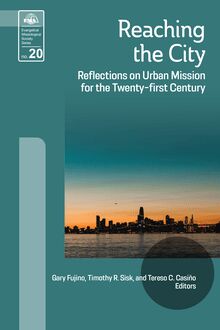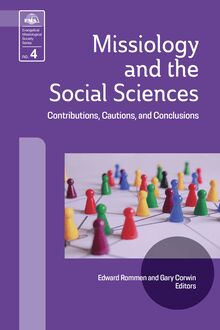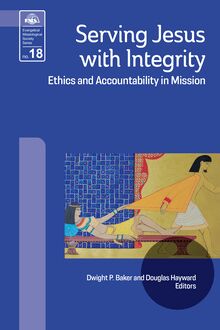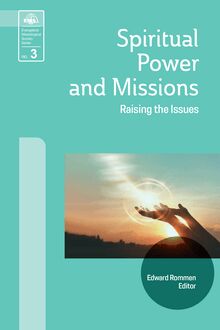-
 Univers
Univers
-
 Ebooks
Ebooks
-
 Livres audio
Livres audio
-
 Presse
Presse
-
 Podcasts
Podcasts
-
 BD
BD
-
 Documents
Documents
-
- Cours
- Révisions
- Ressources pédagogiques
- Sciences de l’éducation
- Manuels scolaires
- Langues
- Travaux de classe
- Annales de BEP
- Etudes supérieures
- Maternelle et primaire
- Fiches de lecture
- Orientation scolaire
- Méthodologie
- Corrigés de devoir
- Annales d’examens et concours
- Annales du bac
- Annales du brevet
- Rapports de stage
La lecture à portée de main
Vous pourrez modifier la taille du texte de cet ouvrage
Découvre YouScribe en t'inscrivant gratuitement
Je m'inscrisDécouvre YouScribe en t'inscrivant gratuitement
Je m'inscrisEn savoir plus
Vous pourrez modifier la taille du texte de cet ouvrage
En savoir plus

Description
Sujets
Informations
| Publié par | William Carey Publishing |
| Date de parution | 01 juin 1995 |
| Nombre de lectures | 0 |
| EAN13 | 9780878089864 |
| Langue | English |
Informations légales : prix de location à la page 0,0600€. Cette information est donnée uniquement à titre indicatif conformément à la législation en vigueur.
Extrait
SPIRITUAL POWER AND MISSIONS
Evangelical Missiological Society Series Number 3
Evangelical Missiological Society Series
#1 SCRIPTURE AND STRATEGY The Use of the Bible in Postmodern Church and Mission by David Hesselgrave
#2 CHRISTIANITY AND THE RELIGIONS A Biblical Theology of World Religions Edward Rommen and Harold Netland, Editors
#3 SPIRITUAL POWER AND MISSIONS Raising the Issues Edward Rommen, Editor
SPIRITUAL POWER AND MISSIONS
Raising the Issues
Edward Rommen, Editor
Evangelical Missiological Society Series Number 3
Copyright 1995 by Evangelical Missiological Society
All Rights Reserved
No part of this publication may be reproduced, stored in a retrieval system, or transmitted in any form or by any means--electronic, mechanical, photocopy, recording, or any other--except for brief quotations embodied in critical articles or printed reviews, without prior permission of the publisher.
Published by William Carey Library 1605 E. Elizabeth Street Pasadena, CA 91104 | www.missionbooks.org
William Carey Library is a ministry of Frontier Ventures Pasadena, CA | www.frontierventures.org
Digital eBook release Primalogue 2017 ISBN: 978-0-87808-986-4
CONTENTS
Introduction
Edward Rommen
1. Missiological Syncretism: The New Animistic Paradigm
Robert J. Priest, Thomas Campbell, and Bradford A. Mullen
2. “Christian Animism” or God-Given Authority?
Charles H. Kraft
3. Biblical Intercession: Spiritual Power to Change our World.
Patrick Johnstone
End Notes
INTRODUCTION
Edward Rommen
“Finally we are getting somewhere. We have rediscovered the tools we need to break through Satan’s fortifications and press on to the final, victorious stage of world evangelization.”
“I’m getting tired of this, every group that comes through wants to ‘break down strongholds,' do a prayerwalk and guarantee our evangelistic success. Of course, no one seems willing to stick around, learn the language, learn the culture and do the hard work of communicating the Gospel.”
Who should take credit for the fruits of the Romanian revolution? The itinerant prayer warriors from the West 1 or the faithful Christians who endured the many years of hardship under the communist dictatorship? 2
These are just a few examples of issues that have surfaced in what has become a very intense discussion about spiritual power and missions. Twenty years ago the idea of spiritual warfare 3 did not generate any unusual interest. This is not to say there was nothing going on. Open confrontation with the powers of darkness has been a part of Christianity throughout its history. As a result there is a well established body of literature, including carefully formulated doctrines, and the reports of Councils. The ancient church used exorcists, 4 treated supernatural opposition as a reality, and faced it squarely. Power encounter was a regular feature of Medieval Missions. 5 Response to Satanic opposition played a significant role during the reformation. 6 Yet no “movement” developed.
Today things are quite different. Spiritual warfare, has riveted the attention of the evangelical community. Everyone seems to be talking about it. Indeed, there has been an explosion of books, seminars, conferences, and courses during the last decade. Debates rage. Tensions are on the rise. Accusations, counter accusations and even schism threaten not only the unity of the church but the missionary enterprise itself. So, where has this sudden intensification of interest come from? What could explain the rise of such concern at this time? Why today?
HISTORICAL CONTEXT
Referring to the current interest in spiritual warfare as a movement may imply a more well defined entity than actually exists. The interest grows out of such a wide range of Christian traditions and raises such a diverse catalog of issues as to almost defy being described by one concept. This broad-based initiative includes a wide range of individuals, organizations, and perspectives. By way of example, consider the variety of groups focusing on prayer, which is just one of many emphases in the movement: David Bryant and the Concerts of Prayer Movement; Peter Wagner and the AD2000 and Beyond Movement’s prayer track; Cindy Jacobs and her Generals of Intercession, Dick Eastman and Every Home for Christ; Steve Hawthorn and Graham Kendrick with their emphasis on prayerwalking.
In spite of this diversity, it is relatively easy to sketch out the broad outlines of the movement’s historical development. There are at least four historical paths along which this “movement” has developed.
1. The General History of the Church. If we had nothing else, we could point to many examples of warfare prayer, power encounter, exorcisms, and healings throughout the history of the church (Wimber 1986:157-185). It seems that almost every generation of believers has had to face spiritual enemies of the faith. Surely there have been many denials and many failures. Nevertheless, there appears to be an unbroken chain of experience, which points to the persistent reality of the spiritual battle. This heritage ought to be examined carefully, for surely it will yield many lessons.
2. The History of Missions. More specifically, these phenomena have been part and parcel of the church’s experience on the front-edge of its advance. Missionaries in their encounter with other religions and cultures have been forced to take spiritual opposition seriously. For example, Allan Tippett directed our attention to the need for what he called Power Encounter, which, in his opinion, was the only way to affect a secure and lasting conversion from animism to Christianity. 7 Although he may not have used this term in exactly the same way as many do today, Tippett’s work illustrates one attempt to come to grips with the power-struggle so often encountered by missionaries.
3. The Concerns of Ministry Strategy. As the missionary enterprise unfolded, some of its creative energy was poured into the development of effective strategies. How can we most effectively fulfill the missionary mandate. A recent example of this concern can be seen in the Church Growth movement. Initially focused on the use of the social sciences as a means of affecting growth, some of its leading proponents began to emphasize spiritual means of growth. This is quite apparent, for example, in C. Peter Wagner’s pilgrimage from Church Growth, to Signs and Wonders and on to Spiritual Warfare (Wagner 1987). A concern for strategy, then, eventually leads to asking (or re-asking) the questions of how our Spiritual Weapons can be used to effect growth.
4. Recent Renewal Movements. The emphasis on the miraculous has been a constant theme in many renewal movements, particularly in this century, including the classical Pentecostal renewals and the more recent charismatic renewals. Interestingly, it seems as though many of these concerns converged with those of the Signs and Wonder Movement.
The modern spiritual warfare “movement” is the composite of ancient and modern concerns that have flowed together via at least four paths. This general flow of history could be diagrammed as follows and shows that in one way or the other many of us have been, are or should be involved in the discussion.
REASONS FOR RENEWED INTEREST
It is one thing to make general observations about the historical development of a movement. It is quite another thing to attempt to explain why such an explosion of interest should have occurred now? Perhaps the survey of the movement’s historical development itself points to factors which may have contributed to, sparked or even made possible such contemporary interest.
1. One reason might be that the prevailing world-view of the West has undergone profound change. The modern rationalistic, godless orientation appears to be crumbling. Many are no longer so sure that the supernatural and God can be denied. In fact, the bankruptcy of our social and intellectual programs have left us without answers and receptive to whatever might be out there. This openness is expressed, among other ways, in the renewed interest in the occult, Eastern mysticism, and New Age. These trends can be seen in films, literature, and even music.
Christians, of course, have not remained unaffected. One of the most telling changes in the church has been the effect which the reports of the experience of foreign missionaries are having. Coming from areas of the world in which the supernatural, the miraculous, and the mystical are accepted, missionaries do not hesitate to speak of demons, exorcisms, miracles. In the context of fading secularism, parishioners no longer view the reports as exotic curiosities, but as possible answers to their own questions. It seems that western Christians are no longer as willing as they once were to discount or even ridicule such reports.
2. Failure of many missionary strategies. In spite of the promise and potential of recently developed strategies, few pastors and missionaries have experienced the kind of success envisioned by the vendors of such growth schemes. How many pastors have been able to start from scratch and raise up mega-churches? How many missionaries have been able to penetrate the bastions of resistant people groups?
When one set of tools or strategies proves inadequate, new ones are sought. Could it be that the frustration of disappointed pastors and missionaries is fueling the interest in these “new” techniques. If tearing down strongholds is presented as a guarantee for evangelistic success, its popularity is no mystery.
If the drive for success in ministry is driving the movement then it might be seen as a logical extension of pragmatism. So, if prayer walking appears to be a “cost effective” way of involving people in missions without requiring long term commitment it will be understandably attractive.
3. Is this demand for power a result of a sense of helplessness? 8 Many appear to have come to the ends of
-
 Univers
Univers
-
 Ebooks
Ebooks
-
 Livres audio
Livres audio
-
 Presse
Presse
-
 Podcasts
Podcasts
-
 BD
BD
-
 Documents
Documents
-
Jeunesse
-
Littérature
-
Ressources professionnelles
-
Santé et bien-être
-
Savoirs
-
Education
-
Loisirs et hobbies
-
Art, musique et cinéma
-
Actualité et débat de société
-
Jeunesse
-
Littérature
-
Ressources professionnelles
-
Santé et bien-être
-
Savoirs
-
Education
-
Loisirs et hobbies
-
Art, musique et cinéma
-
Actualité et débat de société
-
Actualités
-
Lifestyle
-
Presse jeunesse
-
Presse professionnelle
-
Pratique
-
Presse sportive
-
Presse internationale
-
Culture & Médias
-
Action et Aventures
-
Science-fiction et Fantasy
-
Société
-
Jeunesse
-
Littérature
-
Ressources professionnelles
-
Santé et bien-être
-
Savoirs
-
Education
-
Loisirs et hobbies
-
Art, musique et cinéma
-
Actualité et débat de société
- Cours
- Révisions
- Ressources pédagogiques
- Sciences de l’éducation
- Manuels scolaires
- Langues
- Travaux de classe
- Annales de BEP
- Etudes supérieures
- Maternelle et primaire
- Fiches de lecture
- Orientation scolaire
- Méthodologie
- Corrigés de devoir
- Annales d’examens et concours
- Annales du bac
- Annales du brevet
- Rapports de stage
